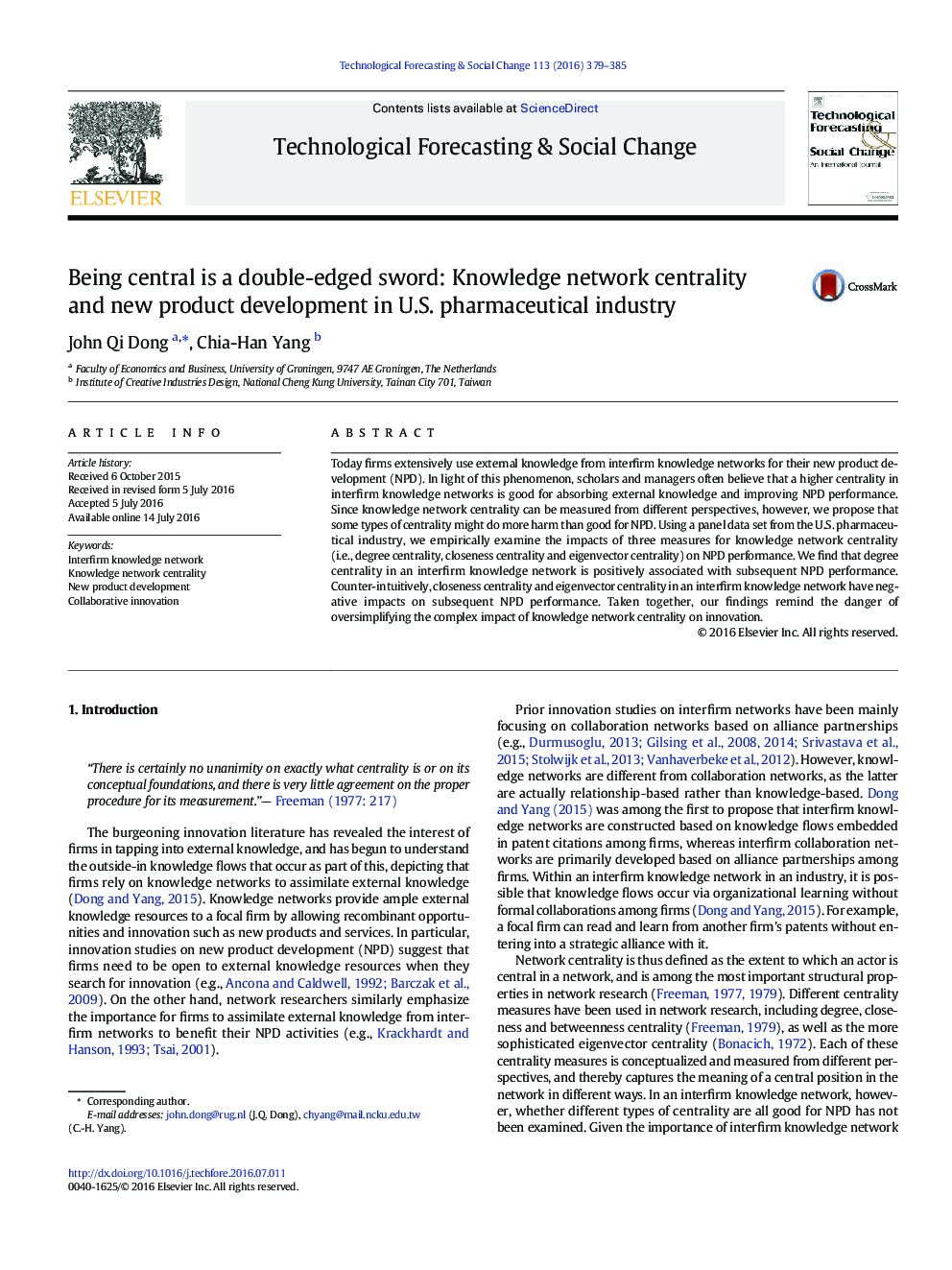| Article ID | Journal | Published Year | Pages | File Type |
|---|---|---|---|---|
| 5036977 | Technological Forecasting and Social Change | 2016 | 7 Pages |
â¢Interfirm knowledge networks are different from interfirm collaboration networks.â¢Three measures for knowledge network centrality are examined.â¢In an interfirm knowledge network, degree centrality improves NPD performance.â¢However, closeness centrality and eigenvector centrality reduce NPD performance.â¢Overall, knowledge network centrality is a double-edged sword for innovation.
Today firms extensively use external knowledge from interfirm knowledge networks for their new product development (NPD). In light of this phenomenon, scholars and managers often believe that a higher centrality in interfirm knowledge networks is good for absorbing external knowledge and improving NPD performance. Since knowledge network centrality can be measured from different perspectives, however, we propose that some types of centrality might do more harm than good for NPD. Using a panel data set from the U.S. pharmaceutical industry, we empirically examine the impacts of three measures for knowledge network centrality (i.e., degree centrality, closeness centrality and eigenvector centrality) on NPD performance. We find that degree centrality in an interfirm knowledge network is positively associated with subsequent NPD performance. Counter-intuitively, closeness centrality and eigenvector centrality in an interfirm knowledge network have negative impacts on subsequent NPD performance. Taken together, our findings remind the danger of oversimplifying the complex impact of knowledge network centrality on innovation.
